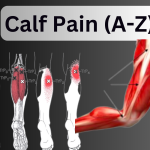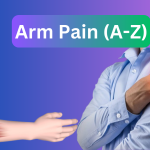Breast pain, also known as mastalgia, is a common concern that affects many women at different stages of life. It may be mild or severe and can occur in one or both breasts — sometimes radiating to the underarm area or originating from surrounding muscles and joints.
This comprehensive guide covers the causes, types, symptoms, diagnosis, and treatment options for breast pain, including pain under the left or right breast, nipple pain, sternum pain, and sharp or heavy sensations.
Understanding Breast Pain (Mastalgia)
Breast pain can be localized to a single area or affect the entire breast. It might extend to the armpit or stem from nearby muscles, like the chest wall.
Hormonal Influence
Hormonal changes, especially before and during menstruation, are one of the most common causes of breast pain. However, pain can also occur independently of the menstrual cycle due to:
- Pregnancy or breastfeeding
- Smoking
- High caffeine or fat consumption
- Breast surgery or trauma
- Certain medications
- Underlying breast conditions
Types of Breast Pain
1. Cyclic Breast Pain
Cyclic breast pain is linked to the menstrual cycle. It’s common among women in their 20s and 30s and often affects both breasts. This type of pain usually subsides after menstruation begins.
2. Noncyclical Breast Pain
This form of pain is unrelated to hormonal cycles and is more prevalent in women between 40 and 50 years old. It often affects only one breast and may feel sharp, burning, or stinging.
What Causes Breast Pain?
Aside from hormonal fluctuations, other possible causes include:
- Birth control pills
- Fertility medications
- Hormone therapy
- Radiation therapy
- Breast cysts
- Breast infections or abscesses
Symptoms of Breast Pain
Cyclic Symptoms
- Swelling and heaviness in one or both breasts
- Tenderness near the armpits or shoulders
- Pain that worsens before menstruation
Noncyclical Symptoms
- Sharp or stabbing pain in a specific breast area
- Pain that persists or recurs unpredictably
- Burning or stinging sensation
How Is Breast Pain Diagnosed?
Your doctor will first ask about the pain’s nature, frequency, and duration. A physical examination will follow to check for lumps or abnormalities.
Diagnostic Tools May Include:
- Ultrasound: Useful for identifying cysts or masses
- Mammography: Helps detect tumors or structural changes
- MRI: In select cases, to rule out malignancies
Treatment Options for Breast Pain
1. Lifestyle and Home Remedies
- Wear a well-fitted bra: Breasts change shape over time — get measured regularly
- Apply warm compresses: Provides localized relief (avoid burns)
- Reduce caffeine intake
- Quit smoking
- Try evening primrose oil
- Add Vitamin E and multivitamins to your diet
2. Medications
If pain is severe, your doctor may prescribe:
- Pain O Soma 500mg
- Aspadol 100mg
- Prosoma 500mg
- Soma 350mg
- Danazol or Tamoxifen (for hormone-related breast pain — only under supervision)
In the case of a lump or cyst causing the pain, minor surgery or drainage may relieve symptoms.
FAQs on Breast Pain
Why do I feel breast pain during pregnancy?
Hormonal shifts, especially increased estrogen levels, cause breast tissue growth and tenderness.
Can breast pain be non-cancerous?
Yes, most breast pain is benign and not related to cancer. However, proper screening is essential.
Is it normal to feel pain in just one breast?
Yes. Noncyclical causes such as cysts, infections, or ductal changes can lead to one-sided pain.
What if breast pain wakes me up at night?
A healthcare provider should evaluate persistent, localized pain that disrupts sleep.
Can anxiety or stress cause breast pain?
Yes. Stress-related tension can contribute to breast pain, especially if it’s non-cyclical.




